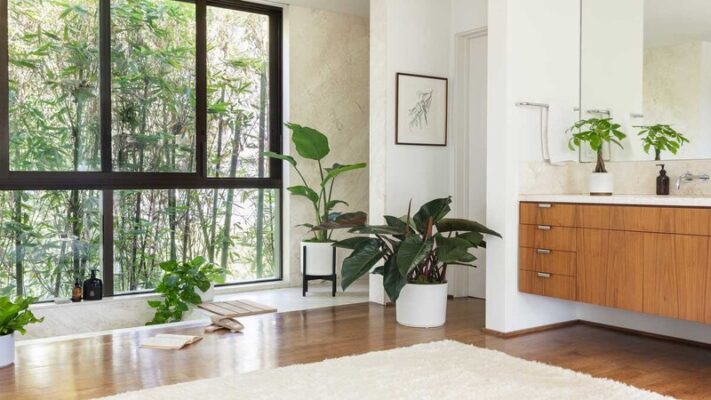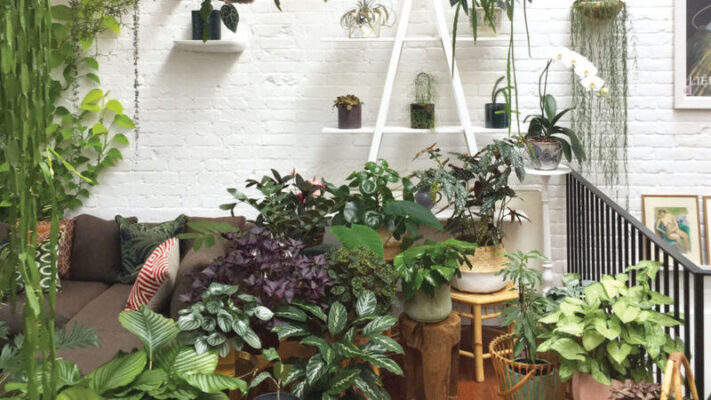Transform your home into a lush indoor oasis even in low-light conditions with our guide to the top houseplants. Discover easy-to-care-for plants that thrive in minimal light, enhancing your living space’s aesthetics and air quality.
Introduction Houseplants for Low Light Homes
Creating an indoor oasis with houseplants is not just about beautifying your space—it’s also about enhancing your health and well-being. Indoor plants are more than just decorative elements; they act as natural air purifiers, removing toxins and improving indoor air quality. Moreover, their presence can significantly boost your mood, reduce stress, and increase your productivity, making them essential components of a healthy home environment.

However, not all homes are bathed in abundant natural light. Many urban dwellings, particularly apartments and studios, suffer from low-light conditions, which can pose a challenge for growing most types of vegetation. Limited light sources, such as small windows or north-facing rooms, restrict the type of plants that can thrive.
This is where the concept of an “Indoor Oasis” becomes invaluable. An Indoor Oasis transforms these low-light areas into vibrant spaces filled with life and greenery. By selecting the right houseplants that thrive under such conditions, you can cultivate a refreshing, green haven in your home, turning a potential limitation into a lush, tranquil living area. This guide will walk you through the top houseplants for low light homes, ensuring that every corner of your abode can flourish with minimal natural light.

Why Choose Low Light Houseplants?
Choosing low light houseplants offers numerous benefits, making them a practical choice for many indoor environments. These houseplants are uniquely adapted to thrive in minimal light, making them ideal for areas of your home that may not receive sufficient natural sunlight. By incorporating these resilient plants, you create an “Indoor Oasis” that enhances the aesthetics of your home while also purifying the air and reducing stress.
In low-light environments, plant growth differs significantly from that in brightly lit areas. These houseplants have evolved to efficiently use the available light, often having larger leaves to capture more of the scarce light resources. This adaptation allows them to photosynthesize effectively even in dim conditions, ensuring they can grow and remain healthy without direct sunlight. Integrating these houseplants into your home decor not only uplifts the space but also supports a healthier living environment, demonstrating that even homes with limited natural light can enjoy the rejuvenating benefits of an indoor oasis.
Top Houseplants for Low Light Homes
Here’s a concise description and care tips for each of the houseplants you’re interested in:
Spider Plant (Chlorophytum comosum)
Spider plants have arching leaves that create a graceful effect, and they are known for their ability to purify indoor air. Easy to grow, they are effective at removing pollutants.
Thrives in indirect light and prefers well-drained soil. Water moderately, allowing the soil to dry out between waterings.

Snake Plant (Sansevieria trifasciata)
With its upright, sword-like leaves, the snake plant is not only striking but also an excellent air purifier. It releases oxygen at night, improving indoor air quality.
Very drought-tolerant and requires minimal water. Does well in low light and should be watered sparingly.
Snake Peace Lily (Spathiphyllum)
Known for its shiny green leaves and white blooms, the peace lily can significantly boost a room’s humidity, reducing airborne microbes and alleviating irritation caused by dry air.
Prefers shade and needs little light to thrive. Keep the soil consistently moist without overwatering.

Houseplants Snake Plant Peace Lily Philodendron
Philodendrons are valued for their lush, vibrant foliage and adaptability, excellent for adding a touch of the tropics to any room.
Grows best in medium indirect light but can tolerate low light. Allow the top inch of soil to dry out between waterings.
Pothos (Epipremnum aureum)
Pothos is celebrated for its hardiness and variegated leaves. It’s extremely effective at removing indoor toxins such as formaldehyde from the air.
Can thrive in low light conditions and requires minimal care. Water when dry, and trim back to manage growth.
ZZ Plant (Zamioculcas zamiifolia)
ZZ plants have a reputation for being nearly indestructible, with shiny, thick leaves that store water, making it highly drought-resistant.
Prefers low indirect light and minimal watering, making it ideal for low-light homes and busy owners.
Calathea
Calathea features uniquely patterned leaves that close at night. It is often used for its decorative leaves and to improve air quality.
Thrives in humid and low-light environments. Keep the soil consistently moist and provide high humidity.
Tips for Caring for Low Light Houseplants
The general rule for houseplants, particularly in low-light conditions, is to allow the soil to dry slightly between waterings. Overwatering can lead to root rot, so it’s essential to check the soil moisture by feeling it with your finger up to the first knuckle. For most houseplants, watering once a week should suffice, but this can vary depending on the humidity and temperature of your home.
Opt for well-draining potting soil tailored to houseplants. This type of soil ensures adequate aeration and moisture retention, crucial for healthy root development. Some houseplants, like orchids or succulents, may require a more specialized mix to replicate their natural growing conditions.
The placement of your houseplants can dramatically affect their health and growth. Low light houseplants should be placed in areas where they will receive indirect, filtered light, such as near north-facing windows or in rooms with sheer curtains. Avoid placing them near heat sources or drafts, as this can dry them out or cause temperature fluctuations that stress the plants.
Common Problems and Solutions
To keep your houseplants healthy and your indoor oasis thriving, address common issues promptly. Avoid overwatering by checking soil moisture before watering. For underfeeding, use a balanced fertilizer every 4-6 weeks during growth periods, but less often in low light. Manage pests early by looking for signs like discolored leaves and treating with insecticidal soap or neem oil. These steps will help ensure your plants remain robust and vibrant.

Conclusion
Creating an indoor oasis with low light houseplants brings numerous benefits, from improving air quality by filtering out pollutants to enhancing your living space’s aesthetic and emotional atmosphere. These plants not only thrive in less sunny areas, making them perfect for spots within your home that lack natural light, but they also contribute to a calming environment, helping to reduce stress and boost mood.
Experimenting with different types of low light houseplants allows you to discover which ones best suit your space and lifestyle. Whether it’s the resilient ZZ plant, the air-purifying snake plant, or the visually striking peace lily, each has unique qualities and care needs. By exploring various options, you can curate a collection that not only survives but flourishes in your specific environment, transforming your home into a true indoor oasis.
Following these care guidelines of Leafgrace will help In door Oasis Houseplants for Low Light Homes


